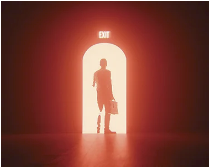By Liz Bentley


In coaching, I often have to help clients understand how to manage the ego—the part of our psyche that controls our self-esteem and sense of identity. While many of us know the ego is a powerful force in our lives, we often don’t realize there are both good and bad sides to it.
When our ego is positive and strong, we have fulfilling lives in which we push ourselves to grow and succeed. But life is not that simple, and we’re constantly thwarted by difficult people and new challenges that sabotage us, pushing our ego to the dark side. When our ego goes south, all bets are off and we often don’t get the best version of ourselves to show up.
When our ego is negative, we see our mistakes as irreversible and a reflection of bad character.
In these rapidly changing times, learning how to manage the ego is critical. For this reason, I created a guide to help you identify when you’re killing it thanks to your ego and when your ego is killing you. Here’s how to thread the needle and avoid the killers.
Killing It: Confidence and Courage
Our ego helps us take risks, do things we are scared of, and go out of our comfort zone. After all, we don’t need confidence when we’re doing things that are familiar and easy; in these situations, we already know what we’re capable of and success is almost guaranteed. But during the hard times of life we need our ego to help us rise to meet those challenges. Our ego works for us when it provides that extra boost of confidence that we need for courage and bravery in the face of fear and uncertainty.
Killer: Arrogance
That confidence boost that our ego can give us can unfortunately give way to arrogance when we become unwilling to see the truth. We start to act like we’re all-knowing, with nothing new to learn. We exaggerate our importance out of a fear of being unimportant, and we overestimate our abilities. Instead of being open-minded, we are closed, thinking our own ideas are the best, and we shut out other people’s opinions. If we don’t manage our ego, we stop listening to others and can’t see the importance of change.
Killing It: Faith
The ego gives us faith when the outlook is rough. Faith is the belief that we can survive any storm and have the diligence to navigate through the ups and downs of life. It’s the belief in ourselves and others that gives us the grit and resilience to keep moving forward. As journalist B.C. Forbes once said, “Triumph is often nearest when defeat seems inescapable.” Faith gives us that one push that makes all the difference, and it’s in the good side of our ego that allows us to find that faith.
Killer: Fear of Scarcity
When we don’t have faith, a scarcity mindset shows up, allowing fear to overtake us. We believe there isn’t enough to go around and we may not survive. We lose our faith, feel discouraged and unconfident. This sabotages our ability to have grit and often pushes us into the realms of blame and excuse. We look for the negative and for reasons to not show up in our lives because we’re convinced it won’t matter anyway. In scarcity, we believe we don’t control our own lives nor have an impact on the outcome; therefore, we think trying won’t make a difference.
Killing It: Being Vulnerable
The ego allows us to feel vulnerable. In vulnerability, we embrace our flaws, take responsibility for our mistakes, apologize meaningfully, and allow ourselves to feel our truths. Feeling our truths means we feel the discomfort and pain and don’t try to push it off for temporary happiness. Instead, we lean into it to grow and learn so that we can continue to evolve into the best version of ourselves. Being vulnerable requires a strong ego, because it’s scary and hard to feel safe in your pain. But with a positive ego, we understand that in vulnerability lies a pathway to strength and healing.
Killer: Blaming Others
When our ego sabotages us, we shut down our vulnerability. We refuse to take responsibility for anything, don’t see our own mistakes or flaws, blame others, and hide from our truths. We can’t tolerate the pain of vulnerability because it means we have to look at ourselves—and we’re afraid to. When our ego is negative, we see our mistakes as irreversible and a reflection of bad character. Instead of leaning into our fear with courage, resilience, kindness, and forgiveness—everything it takes to be vulnerable—we get angry or shut down. We avoid and distract ourselves, hoping that the pain will pass. And yet it rarely does.
With this guidance, you can see that fluctuating between the positive and negative ego is a normal part of everyone’s journey. That’s why identifying when your ego stops working for you and starts working against you is so critical. The sky is the limit when you manage your ego and keep it in a good place. Yet in a flash, it can take you to the basement. So find your confidence, have faith in yourself, and stay vulnerable to the challenges that will propel you forward.
This article originally appeared on Korn Ferry Advance.
Latest Articles
- A Simple But Lost Art
- When to Fire
- The surprisingly simple mindset shift that helped this CEO eradicate workplace drama
- Cautious to commanding: How to turn a passive leadership style into a strength
- When this real estate broker defeated imposter syndrome, her confidence soared – and so did her business.










